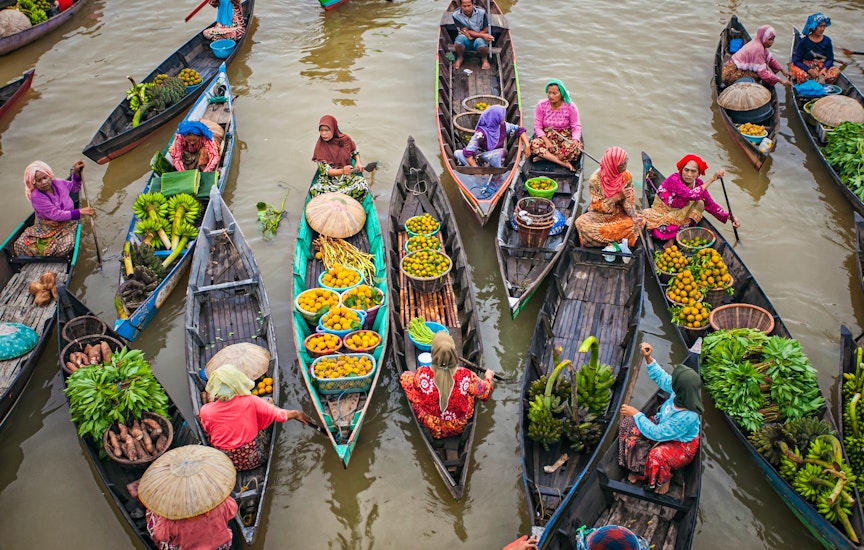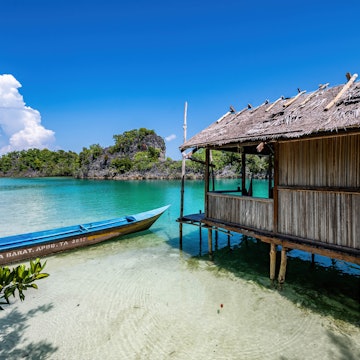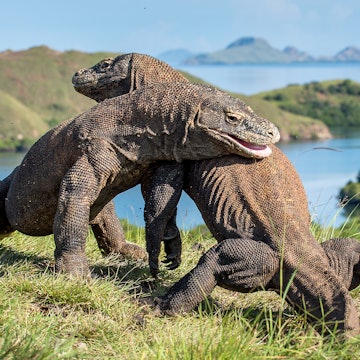
A guide to diving and snorkeling in Indonesia


Plate corals in the Banda Islands in Indonesia. fenkieandreas/Shutterstock
Fans of all things wet, wild and wonderful flock to Indonesia, where the marvels below the waves are every bit as remarkable as life on land. With more than 17,000 islands making up this enormous archipelago, Indonesia is a nation built on the water, and spectacular diving and snorkeling sites pop up off the shores of most of the island groups.
Some locations, however, are true legends. Sites around the Raja Ampat Islands off Papua, the Lembeh Strait off Sulawesi and the islands of Komodo National Park off Flores rank among the world’s top places to dive and snorkel, with an astonishing array of marine life, from tiny nudibranchs, shrimps and seahorses to mighty manta rays, turtles and sharks.
Indeed, going snorkeling or diving here is one of Indonesia’s top experiences. To introduce you to the amazing undersea world of the planet’s largest archipelago, here’s everything you need to know about diving and snorkeling in Indonesia.
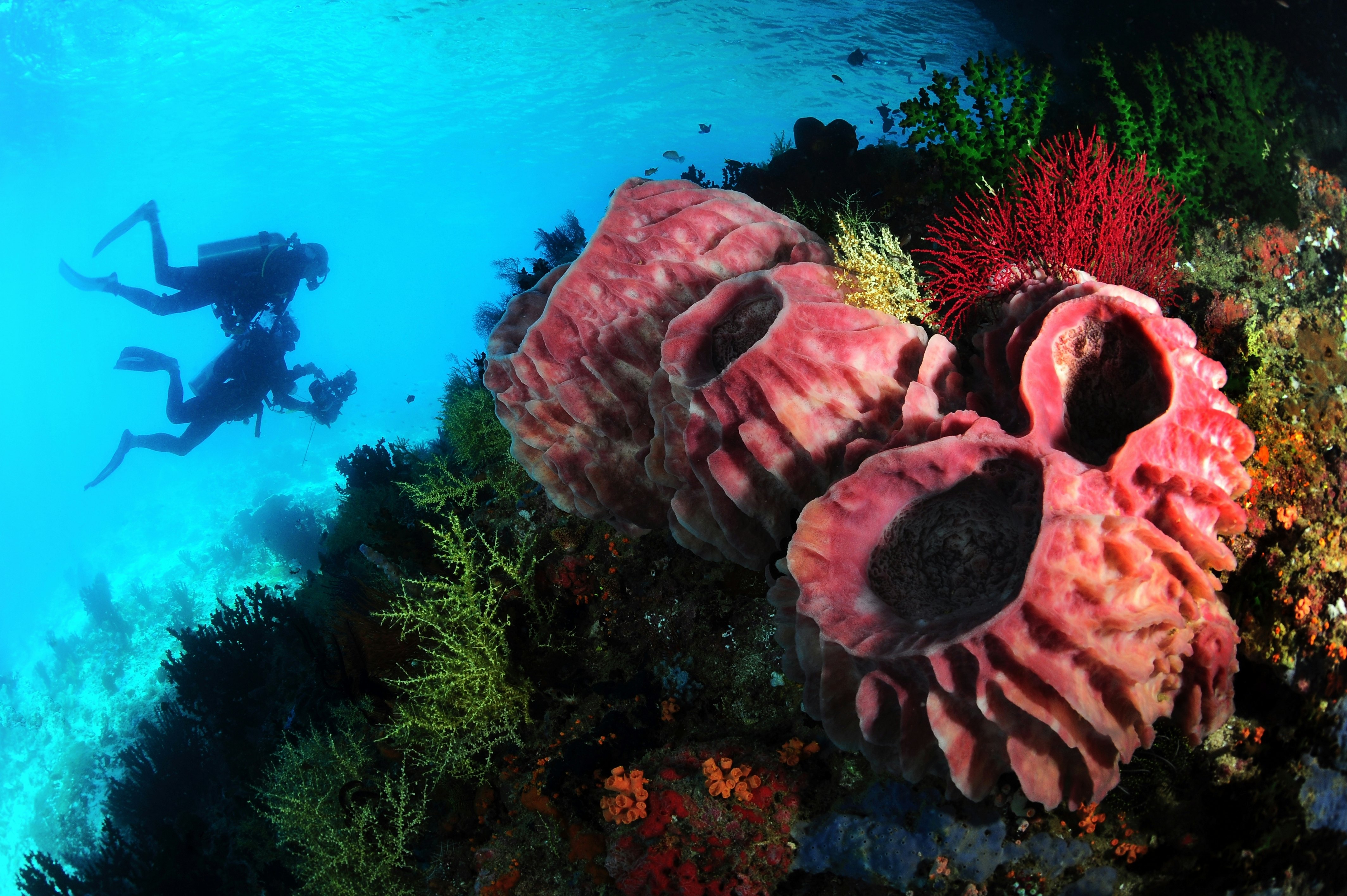
When should I go diving and snorkeling in Indonesia?
The best season for diving and snorkeling varies as you move around this vast archipelago, but broadly, the best time for underwater visibility is during the dry season, which runs from around April to October. Indonesia is affected by the rains of the northwest monsoon from November to March, which can impact water clarity. It's wise to check the timing of the rainy months for your chosen island when planning a trip.
Some spots still offer good diving even when the rains sweep across Indonesia, including the Raja Ampat Islands, the Gili Islands, Nusa Penida and the island of Pulau Weh, which is thronged by mantas and devil rays even in the wet months. During the wet season, dive trips often run in the afternoons rather than the mornings.
How much time should I spend diving and snorkeling in Indonesia?
Many people take a trip to Indonesia just to go snorkeling or diving, so you could easily spend every day of your trip in the water, particularly in key dive spots such as Pulau Bunaken, the Lembeh Strait and the Raja Ampat Islands. Some island groups, such as the isles of Komodo National Park, are best explored on liveaboard boat diving trips lasting anything from two days to a week.

Which is better – the snorkeling or the diving?
While Indonesia is a magnet for scuba divers from around the globe, non-divers can still get plenty from the islands’ aquarium-like seascapes. Snorkeling spots abound all around the archipelago. So as long as you can swim, you can gaze at brightly colored coral and reefs teeming with tropical fish.
Snorkelers can get close to bigger marine life, too. Manta rays, skittish reef sharks and sea turtles can all be seen while looking down from the surface with just a mask and snorkel. There are top snorkeling sites in every region; in northern and eastern Bali and the Gili Islands, you can snorkel right off the beach, and the small islands off Java, Sulawesi and Sumatra all have snorkeling sites that are easily accessible from shore.
On the other hand, diving will get you closer to the marine life and open up destinations off limits to snorkelers. While it’s easy to get certified to scuba dive in Indonesia, many of the best dive sites are channels between islands with strong currents, and these are more suitable for advanced divers. If you plan to dive widely in Indonesia, an advanced open water certification or higher is the best option. For some deeper dive sites, Nitrox diving is also possible for certified divers.
How do I get to the best diving and snorkeling sites in Indonesia?
To reach many diving and snorkeling spots, you’ll first have to get to the nearest island and then book a diving trip or snorkeling tour by boat. Fortunately, getting around in Indonesia is easy, with international airports dotted around the islands and an extensive network of domestic flights and ferries linking islands along the archipelago.
You may find it easier to fly directly to regional hubs such as Makassar, Medan or Bali, rather than going via Jakarta. On individual islands, buses and some trains (on Java and Sumatra) provide internal connections.
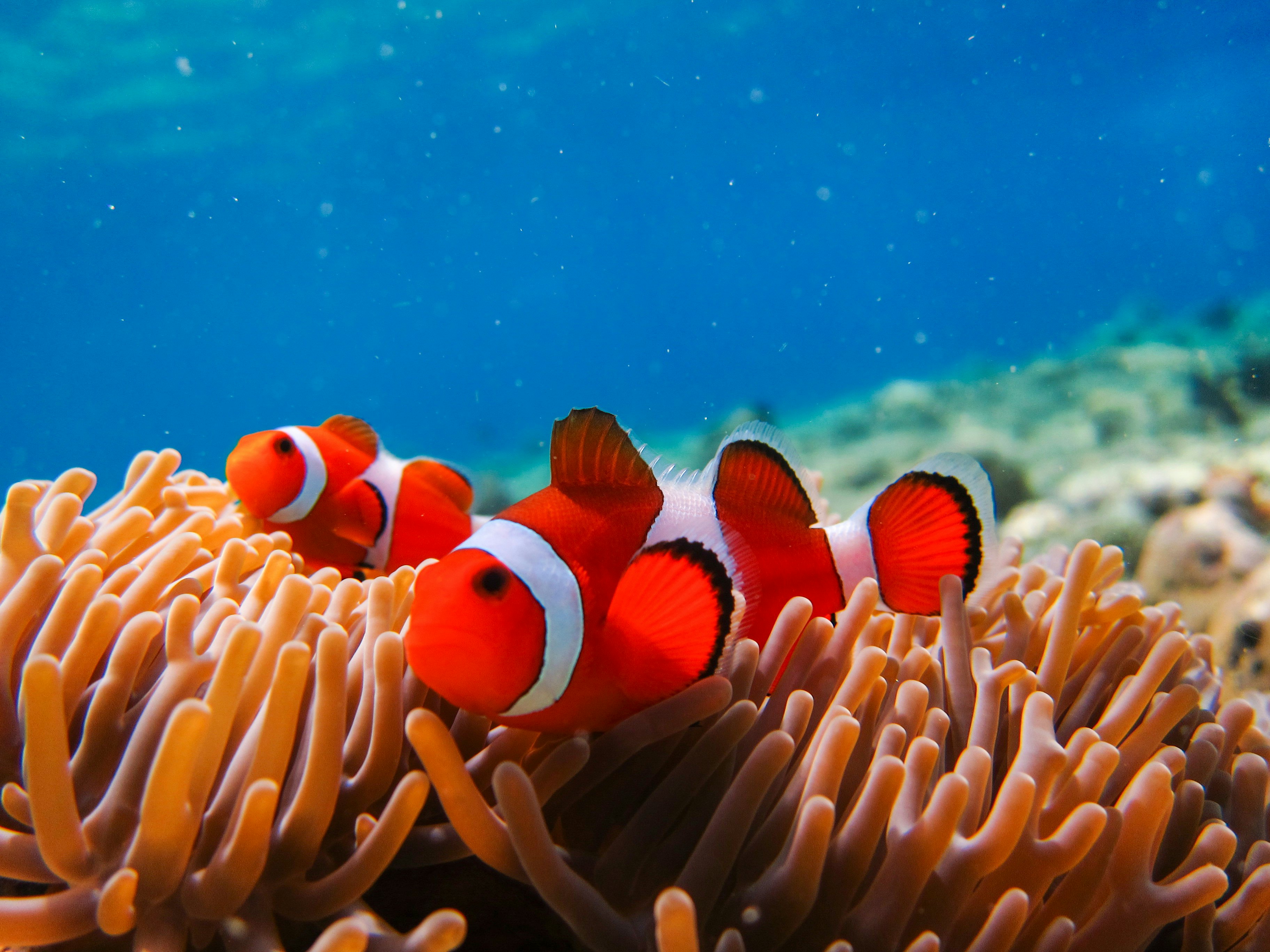
How much does it cost to go diving or snorkeling in Indonesia?
Snorkeling is always going to be the cheaper option – indeed, with your own mask and snorkel, you can see a sparkling kaleidoscope of fish off many beaches and rocky headlands for free. If you don't have fins, wear water shoes for protection against cuts from sharp coral, rock or spiky marine life.
Snorkeling gear can also be hired locally for as little as 25,000Rp in tourist areas, including at some beachside places to stay. Most dive shops and tour agencies offer snorkeling trips – indeed, many boat tours in Indonesia include regular stops for snorkeling, with gear included in the tour price.
Prices for scuba diving vary from location to location and depend on how far the dive site is from shore. Dive sites you can reach without a boat are the cheapest option. Boat dive prices depend on how many dives you take on the trip – two or three is the norm. For a two-dive boat trip, expect to pay around 1,000,000Rp.
At the top of the range are liveaboard dive boat packages to destinations such as Komodo National Park and the Raja Ampat Islands. You’ll eat and sleep on board as you explore more remote, outlying sites where there are fewer divers to disturb the marine life. Expect to pay upward of US$300 per day for a trip, including meals; you may have the opportunity for night dives, too.
What about dive certification?
Indonesia is an inexpensive place to get certified to dive. PADI Open Water certification courses cost around US$300, but prices can be even lower in tourist hubs such as Bali and Gili Trawangan, and all levels of training are available. Ask other travelers for recommendations of reputable dive schools. Better dive companies follow clear sustainability and conservation guidelines, and many are members of local environmental organizations.
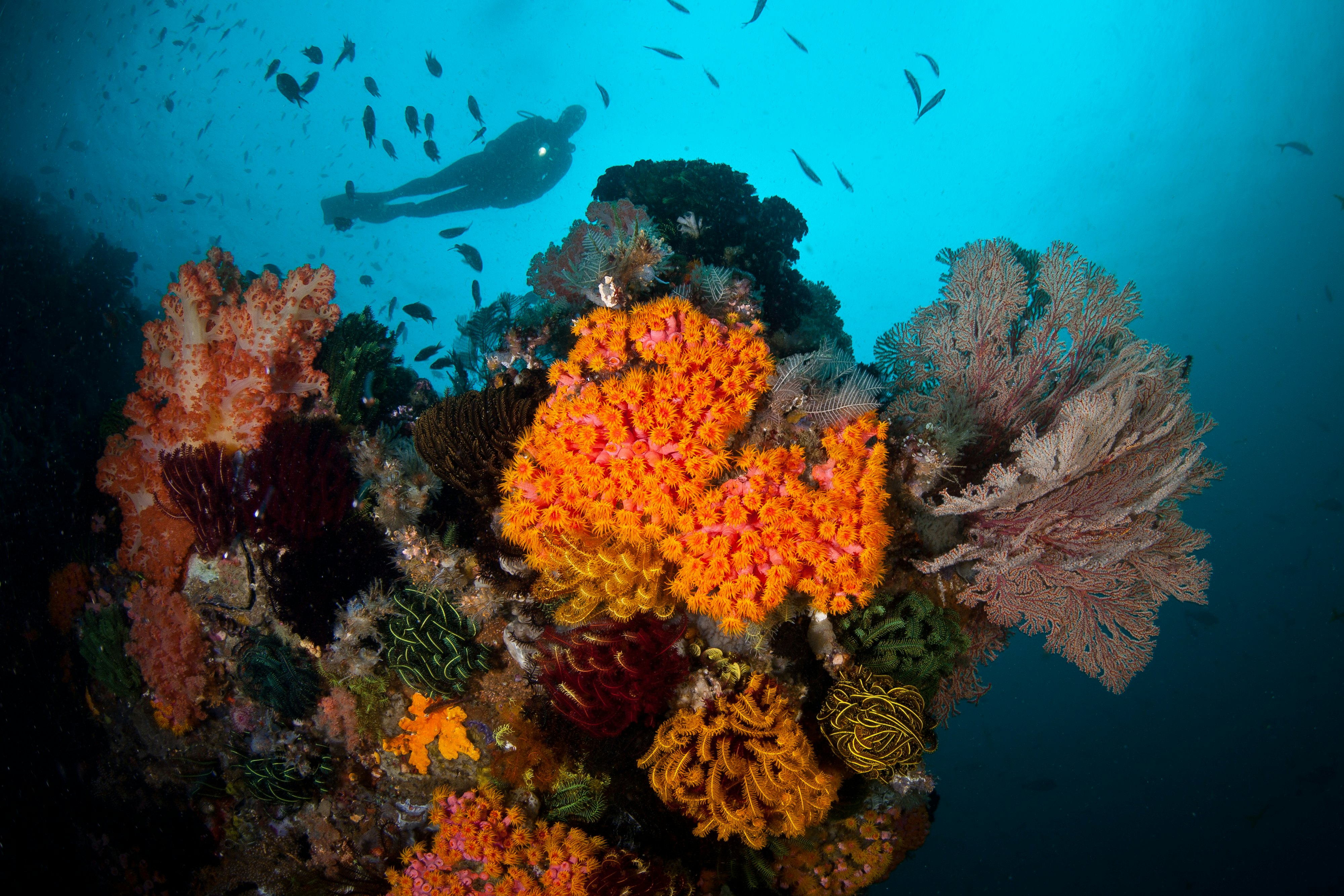
Where are the top places to snorkel and dive in Indonesia?
There are more great diving and snorkeling spots in Indonesia than you would have time to visit in a lifetime, but here is a list of the very best.
Komodo National Park
Boat trips from Labuan Bajo on Flores to see Komodo dragons on the islands of Komodo National Park routinely make stops for snorkeling on the park’s magnificent coral reefs. The pristine marine environment here is alive with diverse, healthy coral systems, and haunted by manta rays, reef sharks and turtles.
This is also a top spot for diving, with local dive centers offering day-trips by boat from Labuan Bajo and multi-day liveaboard diving expeditions. Strong currents mean that some of the best diving sites are for experienced divers only. Top sites include Karang Makassar for manta rays, Castle Rock for grey, whitetip and blacktip reef sharks and Batu Bolong and Sabolan Kecil for vast schools of multicolored reef fish.
Raja Ampat Islands
You’ll have to travel to the edge of Indonesia to dive or snorkel around the marvelous Raja Ampat Islands off Papua. The reefs of Raja Ampat have hundreds of brilliantly colored soft and hard corals, and the marine topography varies from vertical walls and isolated pinnacles to flat reefs and underwater ridges.
Raja Ampat has been dubbed a “species factory,” with more than 1400 fish species and more than 600 varieties of hard coral (75% of the planet’s total). This is a place to get up close to graceful manta rays and giant clams, gape at schools of barracuda, fusiliers or parrotfish, peer at tiny pygmy seahorses or multicolored nudibranchs, and, with luck, encounter wobbegong and epaulette (walking) sharks.
The easiest way to see it all is on a liveaboard boat trip from Sorong. There are dozens of operators to choose from – take your pick from luxury trips with Pindito and Dewi Nusantara, budget packages with Raja Ampat Adventures, and everything in between. If you’re not a diver, Calico Jack offers snorkeling experiences aboard a lovely wooden pinisi boat.
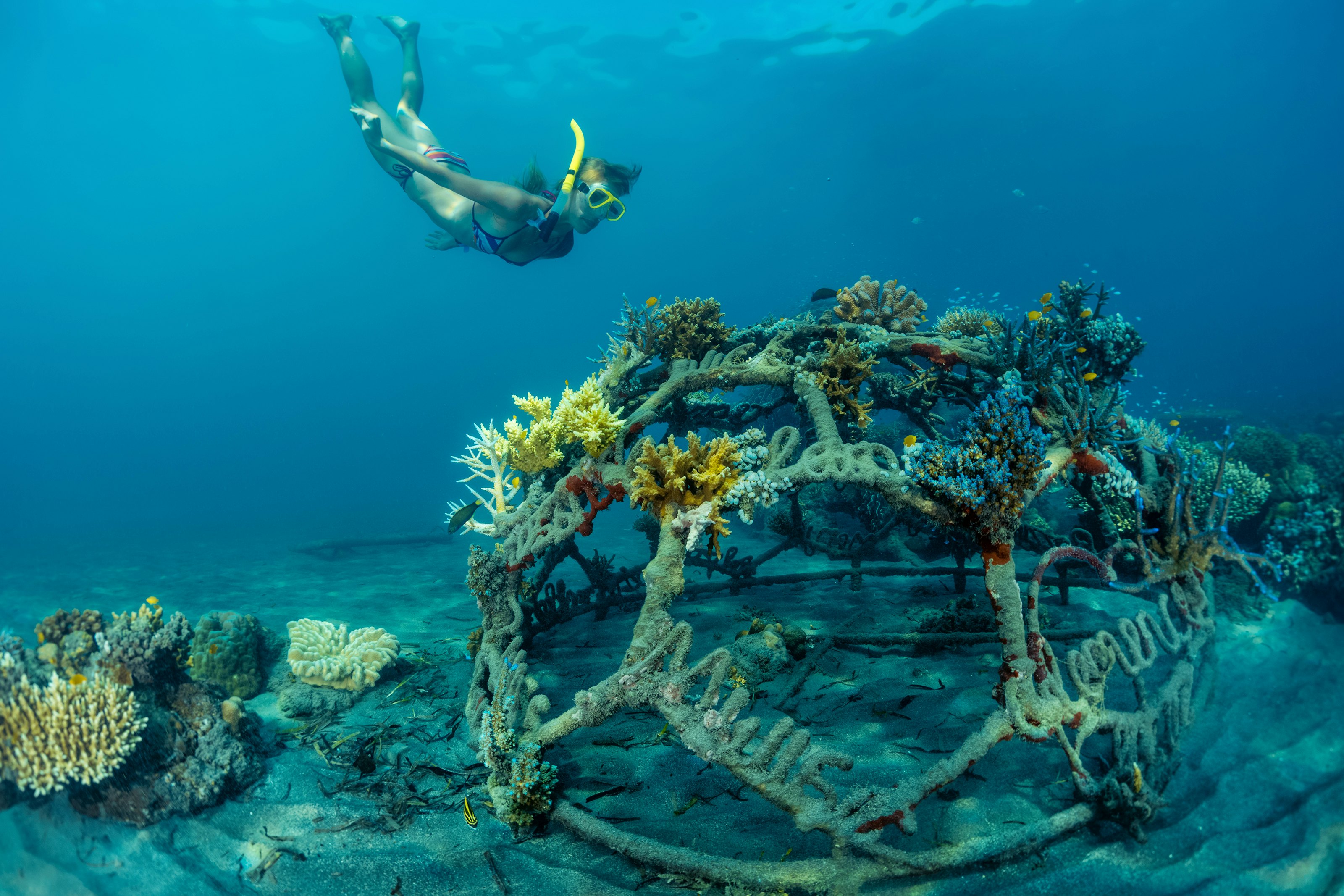
Bali
Beach-hub Bali offers numerous places to snorkel and dive, including many that are ideal for beginners. Just offshore on Nusa Lembongan, Pantai Jungutbatu must be one of the few beaches on the planet where you can snorkel over a coral reef just 100m from surfers riding perfectly formed waves. Lembongan is renowned for its underwater world, and numerous dive centers can deliver you to the best diving and snorkeling spots.
Then there’s Nusa Penida, famed for its resident manta rays – true giants of the deep – and sightings of the strange ocean sunfish, which looks like a giant platter with handles. Tulamben, meanwhile, has the legendary wreck of the US cargo ship Liberty, one of Bali’s most rewarding dive sites. For certification courses, try traveler hubs such as Sanur, Tulamben, Amed and Pemuteran.
Gili Islands
Off the northwest coast of Lombok, the Gili Islands are the dream destination in Indonesia for people who want to rock up, kick off their shoes, run barefoot across the sand and dive in. This is a great spot to snorkel and learn to dive, with plenty of sites suited to beginners. Snorkelers can go in right off the beach in many spots around the shores of these three idyllic isles.
For divers, some 25 dive sites are located in the Gili Matra Marine Protected Area. Tiny creatures such as pygmy seahorses, mantis shrimp and pipefish flutter about the corals, staying well clear of larger species such as whitetip and blacktip reef sharks. Experienced divers can venture down 45m to the shipwreck of a Japanese patrol boat off the southern coast of Gili Air.
Dive sites are dotted all over the Gili map. Shark Point lies west of Gili Trawangan, living up to its moniker; the same can be said of turtle-filled Turtle Heaven on the east side of Gili Meno. Just south of Gili Trawangan, Manta Point attracts giant rays and plenty of smaller fish flitting between the corals.
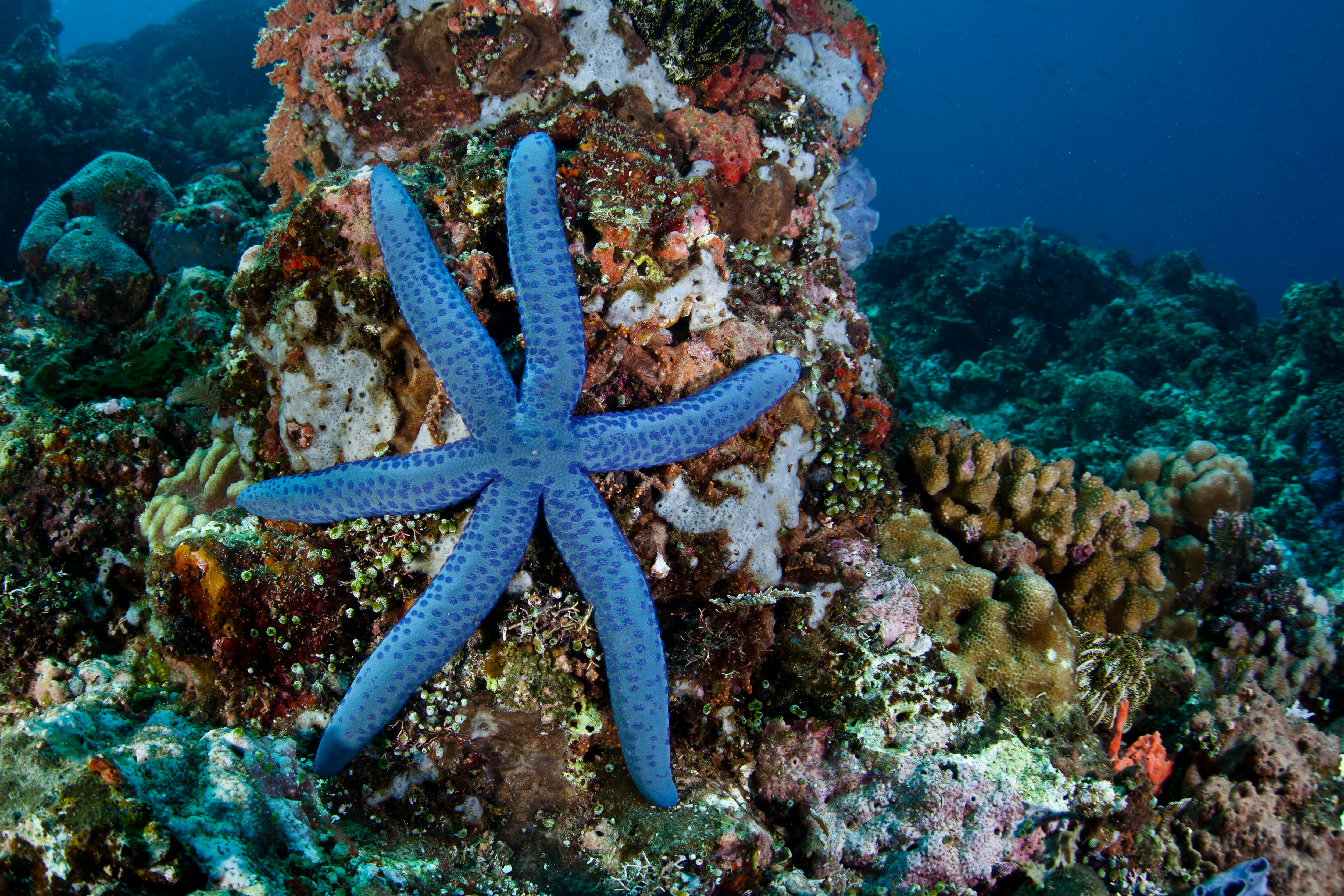
Lembeh Strait
Enter the weird and wonderful underwater world of Sulawesi’s Lembeh Strait to see some of Indonesia's most bizarre marine critters. Set between the industrial port of Bitung and the large island of Pulau Lembeh, Bunaken Marine Park is world famous for its muck diving – diving on the sedimentary bottom in search of tiny "macro" creatures, usually with an underwater camera in hand. There are also reefs, five wrecks and fantastic night dives lit by phosphorescence.
As well as nudibranches and sea slugs, weird animals you might see in the Lembeh Strait include the hairy frogfish, the tiny pygmy seahorse and the mimic octopus, which can convincingly imitate more than 15 other animals, including sea snakes, crabs, stingrays and jellyfish. Most of the dive resorts sit on the western side of Pulau Lembeh.
Pulau Bunaken
Most people come to Pulau Bunaken near the northern tip of Sulawesi to dive or snorkel in truly spectacular surroundings. Pulau Bunaken is uniquely surrounded by deep water, with strong, nutrient-laden currents, and a mangrove ecosystem that protects much of the beaches and corals from erosion. The biodiversity in the marine park is extraordinary, with more than 300 types of coral and 3000 species of fish, abundant sponges and phenomenally colorful life on vertical walls.
Beyond drop-offs, you’ll find underwater caves and valleys full of brightly colored sponges, thriving corals and biblical numbers of fish. It's very rare not to see hawksbill and green turtles on every dive, and you'll also encounter rays and sharks. Which sites your dive boat visits will depend on currents and prevailing weather conditions.
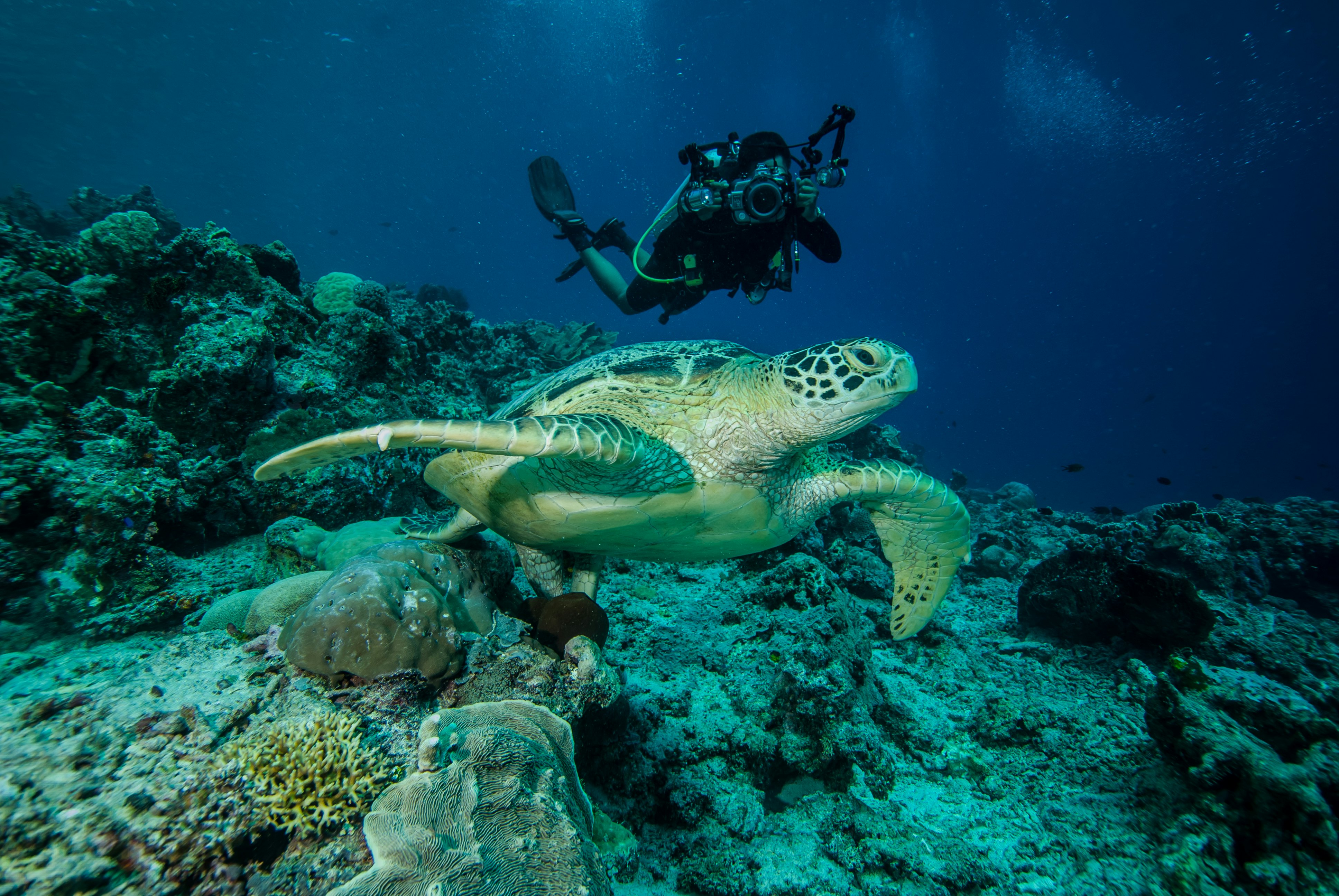
Derawan Archipelago
The 31 islands of the Derawan Archipelago are a fantasy of a tropical paradise. Isolated in the Celebes Sea off the Kalimantan coast, these mostly uninhabited islands are surrounded by rainbow-hued reefs and turquoise water that laps at white-sand beaches fringed by palm and casuarina trees. The archipelago forms part of the Coral Triangle, one of the richest and most diverse marine environments on Earth, and the diving and snorkeling here is simply world-class.
Pulau Derawan is the base for numerous dive operators, who run trips to offshore sites such as Maratua Atoll, Pulau Sangalaki and Pulau Kakaban, between one and two hours away by speedboat. Manta rays, barracuda, whale and thresher sharks can all be seen, but this isn’t really a destination for novice divers as currents are strong. Snorkeling trips visit sites that are suitable for newbies.
Alor Archipelago
The dive sites of the Alor Archipelago in Nusa Tenggara will let you loose on perhaps the most pristine reefs in all of Indonesia. Alor has it all – tremendous visibility, a vast array of dive sites, world-class coral reefs abuzz with shoals of reef fish, stunning walls, and frequent sightings of reef sharks, rays and turtles, plus the occasional dolphin pod and whale. Best of all, you’ll have it all pretty much to yourself.
Strong, unpredictable currents mean that many sites are best suited to experienced divers, although being selective about where and when you dive will open up parts of this magical marine world to novices and intermediate divers. Day dives from Pulau Pantar and Pulau Kepa aside, the Alor Archipelago is best experienced on a liveaboard.
One of Alor’s most exhilarating drift dives is the aptly named Fish Bowl, which draws scorpion fish, titan triggerfish, midnight snappers, schools of neon-blue fusiliers and Moorish idols. On the east coast of Pulau Pura, Mike’s Delight is another excellent drift dive with hard and soft corals that are alive with parrotfish, damselfish, angelfish and Napoleon wrasse.

Banda Islands
Close to Maluku, the Banda Islands combine natural beauty, a warm island welcome and some fascinating marine life, providing ample compensation for the somewhat convoluted journey to get there. The islands' impressive undersea drop-offs are vibrantly plastered with multicolored coral gardens offering superlative snorkeling and diving.
Accessible from Bandaneira in the center of the Bandas, Pulau Ai is justly famed for the remarkably accessible, brilliantly pristine coral drop-offs that sit just a flipper-flap away from the shoreline. There’s a lot to see, especially in October when groups of Napoleon fish appear, along with migrating dolphins and whales.
Pulau Weh
You’ll find an abundance of dive centers offering snorkeling and diving trips on Pulau Weh at the northwest end of Sumatra. The scene here is centered around Iboih and Gapang, and local dive boats visit around 20 dive sites, including a WWII wreck. The island is also a growing hub for freediving, thanks to operators such as Freedive Weh, operating from Gapang.
Snorkeling here is great. As well as brightly colored fish and coral, you might spot whitetip reef sharks, turtles, and even mantas and whale sharks when the plankton blooms. The other marine adventure here is snorkeling over curtains of bubbles emerging from sulfur-yellow cracks in the sea floor, created by fissures from underwater volcanoes.
This article was adapted from Lonely Planet’s Indonesia guidebook, published in July 2024.




